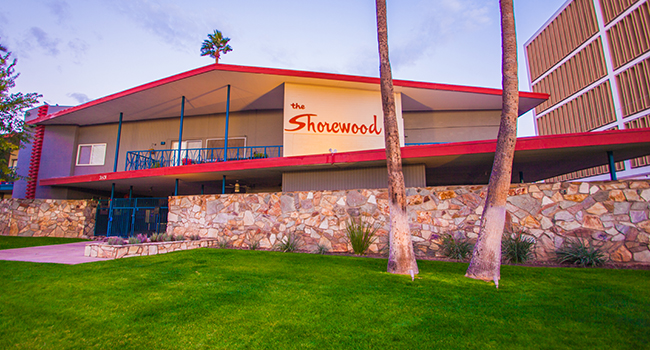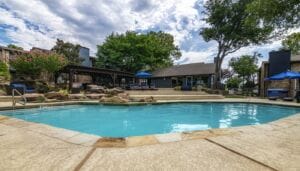Job Growth Intensifies Apartment Demand and Construction in Tempe
Hiring by large companies will generate further demand in local apartments, creating density in urban corridors, according to a report compiled by Marcus & Millichap.
Continued optimism by Phoenix employers boosted job growth during the past four quarters, with increases expected throughout the year. White-collar jobs along with health professionals contributed to a large share of total employment, including nursing/direct care staff and back-office positions.
In the Tempe area, the State Farm campus is up and running, while other portions of the site continue to be developed, which means more workers and demand for residences. Nearby, Home Depot’s 110,000-square-foot service center opened last fall and continues to hire, with a goal of 100 new employees starting in August.
Employees are attracted to apartments in high-traffic areas that are a short drive or walk to work. Developers are responding by ramping up apartment completions in the metro, with a target of 2,700 units in the Tempe, University and South Scottsdale areas alone. Vacancy in these locations varies, with the lowest rate in South Scottsdale.
An influx of apartment completions near Arizona State University continue to be leased up over time. Despite temporary headwinds in certain submarkets, overall market demand continues to improve, pushing up the average effective rent in these areas above the $1,000 per month mark.
Tightening vacancy and rising rents will improve NOIs, generating investor demand.
The average price per unit increased by double digits this past yearlong period through June, pushing cap rates lower into the high-5 percent territory. The most trades occurred in neighborhoods off the Interstate 17, north to Thunderbird Road and south to Thomas Road.
Assets in neighborhoods slightly east of the I-17 generally consisted of smaller properties in the 10- to 50-unit range that traded at cap rates in the low-6 percent span, with higher yields to the west. Older properties in nearby neighborhoods such as Sunnyslope and Maryvale traded at cap rates in the 7 percent range.
Buyers seeking stabilized and luxury assets targeted the Camelback/Biltmore submarket with returns starting at 4 percent and increasing to the high-5 percent area.

Economy
Phoenix employers generated nearly 63,400 positions during the past 12 months ending in June, a 3.3 percent increase. Multiple employment sectors added 10,000 or more spots. In the prior annual period, approximately 54,800 jobs were created.
 The largest annual growth was in the education and health services sector with 14,300 jobs, up 5.1 percent. This includes a large portion of healthcare and social assistance positions. The professional and business services sector grew with 11,500 positions, a 3.6 percent annual increase.
The largest annual growth was in the education and health services sector with 14,300 jobs, up 5.1 percent. This includes a large portion of healthcare and social assistance positions. The professional and business services sector grew with 11,500 positions, a 3.6 percent annual increase.
Nearly 8,000 retail trade positions were added, a 3.6 percent gain year over year. The construction sector advanced nearly 10 percent with approximately 10,000 new workers, largely attributed to robust demand growth for housing.
Outlook: Job growth advanced by 16,200 positions in the first six months of 2016 and will accelerate for an annualized 2.9 percent gain or 56,000 headcounts.
Housing and Demographics
New jobs supported the Valley’s population growth, which accelerated 2.4 percent in the four-quarter period as 3.1 percent more households were created.
 The planning pipeline is robust, with a more than 53.8 percent annualized surge in multifamily permits and a 7.2 percent climb in single-family permitting. Single-family builders are targeting areas on the periphery of the metro while apartment builders target urban corridors in Central Phoenix, Tempe and Scottsdale.
The planning pipeline is robust, with a more than 53.8 percent annualized surge in multifamily permits and a 7.2 percent climb in single-family permitting. Single-family builders are targeting areas on the periphery of the metro while apartment builders target urban corridors in Central Phoenix, Tempe and Scottsdale.
Median home pricing gained 6.4 percent annualized to approximately $230,000 through June. The median household income grew 3.7 percent to $56,400 per year. Homeownership is below the prior peak, indicating a shift toward renting, despite the apparent affordability in home prices. Yet, typically homes in many desirable urban areas are priced above the median.
Outlook: Some residents may favor well-located though higher-priced apartments over homeownership in areas near highly trafficked corridors or within employment hubs, as available single-family listings in these areas are out of reach.
Construction
Developers completed 9,800 units the past four quarters; the majority were delivered in the first half of 2016. This more than doubles the number of additions in the prior period. Builders targeted multiple submarkets with more than 1,000 units delivered in each, including South Scottsdale, North Tempe/ University and Chandler.
 One of the largest projects to be completed in the past four quarters is the 440-unit first phase of San Travesia on McDowell Road in South Scottsdale.
One of the largest projects to be completed in the past four quarters is the 440-unit first phase of San Travesia on McDowell Road in South Scottsdale.
The planning pipeline will be maintained in coming years. There are currently 9,700 rentals under construction with deliveries planned through April 2018. Builders are setting their sights on future deliveries in 2017 and 2018 in midtown and downtown Phoenix along with units slated for the Tempe area. Historically known as prime land for residential subdivisions, the Chandler and Gilbert areas are also set to receive a large number of units in coming years.
Outlook: Developers will increase apartment construction by a third with the completion of more than 9,100 units this year to meet the demand for luxury units in high-demand corridors.
Vacancy
Average vacancy tightened 90 basis points during the 12-month period to 4.4 percent in the second quarter, the lowest level in the past six years. This follows a 100-basis-point drop in the prior period.
 Vacancy fell 150 basis points or more in eight submarkets, with the largest decrease of 230 basis points in West Phoenix to 2.8 percent. This was followed by Peoria/Sun City/Surprise, down 220 basis points to 3.3 percent and Southwest Mesa, which had a 200-basis-point decrease to 2.8 percent.
Vacancy fell 150 basis points or more in eight submarkets, with the largest decrease of 230 basis points in West Phoenix to 2.8 percent. This was followed by Peoria/Sun City/Surprise, down 220 basis points to 3.3 percent and Southwest Mesa, which had a 200-basis-point decrease to 2.8 percent.
Areas with value-add potential include submarkets where average vacancy sits above the metrowide average. North Central Phoenix vacancy ticked up 10 basis points to 5.9 percent. Vacancy in the economic hubs of North Scottsdale and North Tempe/University was 8.3 and 8.7 percent, respectively, as new supply overtook demand temporarily.
Outlook: Apartment vacancy will tick 10 basis points lower to 4.5 percent as a majority of units are delivered in the second half of the year.
Rents
Average effective rent gained 8.1 percent to $924 per month during the past four quarters ending in June, accelerating from the 7.0 percent increase in the prior period and marking a sixth consecutive period of growth.
 Double-digit rent growth was registered in multiple submarkets, led by an 11.0 percent advance in North Scottsdale to $1,205 per month, the highest rent in the metro. This gain was followed by a 10.7 percent increase to $1,022 per month in the Gilbert submarket.
Double-digit rent growth was registered in multiple submarkets, led by an 11.0 percent advance in North Scottsdale to $1,205 per month, the highest rent in the metro. This gain was followed by a 10.7 percent increase to $1,022 per month in the Gilbert submarket.
Rent growth was particularly pronounced at 7.1 percent to $1,112 per month in relatively newer properties built between 2000 and 2009, as demand for amenities and urban locales remained strong. A drive toward affordability also drove up rents in older properties built in the 1970s and 1980s, rising roughly 9 percent to the mid- to high-$700 per month range.
Outlook: An increase in newer apartments combined with demand growth across tranches will amplify effective rent 6.5 percent this year to $937 per month.
Sales Trends
Following a 30 percent acceleration in trades last year, recent activity increased 19 percent to the highest level in nine years during the four quarters ending in June. Camelback/Biltmore was targeted in the luxury segment, while the North Mountain and Peoria/Glendale/Maryvale submarkets provided a larger variety of yields.
 Valuations increased 12.7 percent to $92,700 per unit on average, generally ranging from $50,000 to $200,000 per door based on quality of asset, age, amenities and proximity to workplaces and entertainment.
Valuations increased 12.7 percent to $92,700 per unit on average, generally ranging from $50,000 to $200,000 per door based on quality of asset, age, amenities and proximity to workplaces and entertainment.
Newer properties or those in core locations provided 4 percent initial returns, while assets in far outlying urban corridors traded in the 7 to 8 percent span. Older properties in high-demand areas such as Old Town Scottsdale garnered returns in the high-5 to low-6 percent area.
Outlook: Strong operations will maintain intense investor demand this year, with an eye to neighborhoods with growing density, especially in Midtown and North Phoenix off major routes such as I-17.
____________________________________________________________________________________
Content courtesy of Marcus & Millichap 2016 | www.MarcusMillichap.com




